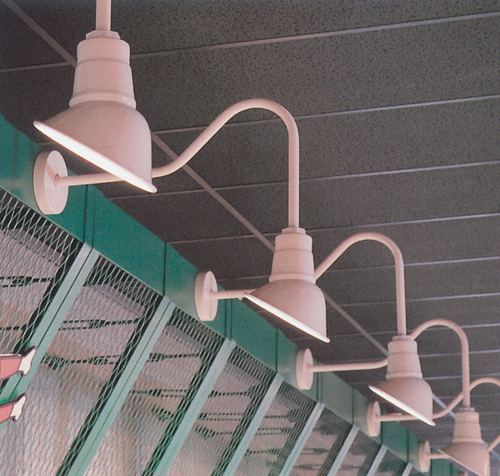Selecting the Right Architectural Lighting Fixture for Any Project Space
While general lighting needs can be met by lighting fixtures that cast illumination in a broad and universal footprint (non-directional), accent and task lighting often require lighting fixtures to be capable of focusing their illumination in a specific direction. These directional lighting fixtures can target items or surfaces needing emphasis.
Beyond providing targeted task or accent lighting, directional lighting fixtures can reduce the energy consumption of a space in two ways. First, directional lights can be kept OFF when the room is not in use or when the light-intensive task is not being performed, without impacting the functionality and ambient light levels of the larger space. Secondly, directional lights are typically closer to the object they are illuminating than a general lighting fixture and that proximity may require less overall wattage to provide the desired level of illumination on the surface. However, it should be noted, that if directional lighting is not turned OFF when unnecessary, it has the potential to create greater energy waste due to the increase in fixtures.
Instead of relying on only non-directional lighting or only directional lighting in a room, a good balance is often the best solution. Where spaces with only general lighting may not provide enough illumination on a specific surface to support a more visually challenging task and cannot highlight specific areas of interest, spaces equipped with only directional task or accent lighting, with no general overhead illumination, may appear darker than a space with general lighting and create a space with such stark visual contrast, between the dark ceiling and the directional lighting, that it may cause physical discomfort and eye strain for people in the space.
Overview of Architectural Lighting Fixtures
Lighting devices that are mounted to the structure of the building are considered architectural lighting fixtures. Lamps and other moveable lighting devices that plug into outlets are referred to as portable lighting. There are eight types of architectural lighting fixtures commonly used in commercial and institutional projects.
Some architectural lighting fixtures are best suited for providing either general or task/accent lighting, while some fixture types can provide both. |
||
Architectural Fixture Type |
General/Ambient Lighting |
Task/Accent Lighting |
Surface-mounted, hanging, recessed luminaires (troffers) |
X |
|
Track Lighting |
X |
X |
Cove Lighting |
X |
X |
Downlights |
X |
X |
Reflector Lamp |
|
X |
Sconces |
X |
|
Wall Wash |
|
X |
Chandelier |
X |
|
Surface-mounted, hanging, and recessed luminaires typically fitted with fluorescent lamps are commonly used to provide general or ambient lighting for the general use areas in offices and other large commercial and institutional facilities. This type of fixture, regardless of mounting type, is often referred to as a troffer, which received its name because it literally resembles an inverted trough that serves as a support and reflector for the lamp. These fixtures can deliver predictable levels of consistent light throughout a space.
Track lighting refers to an electrical track that is mounted on the ceiling and fitted with adjustable lighting units, for general or directional lighting, that can be easily re-positioned along the track. These systems are particularly useful for display and gallery lighting.
Cove lighting fixtures are designed to fit into a cove or pocket that is built into the ceiling or wall in the space. These fixtures provide indirect light, bouncing light off of the ceiling and into the larger space, while remaining concealed from view. These fixtures can be used to provide general ambient lighting or to highlight areas of architectural interest in the built environment.
Downlights are among the most widely used architectural lighting devices. As their name implies, these fixtures emit light in a straight downward direction. These fixtures are available in a variety of shapes, sizes, and lamp types and can be used to provide general use lighting or directional lighting to illuminate a horizontal plane. Downlights can be recessed, surface-mounted, or hung on a stem.
 |
Fixtures with reflectors can be suspended from the ceiling or attached to the wall with a gooseneck pipe bracket (shown here). Photo courtesy of Bock Lighting |
Fixtures with reflectors employ an opaque reflector that directs light from the lamp in one direction. They can be suspended from the ceiling, as a directional pendant light, or attached to the wall with a gooseneck pipe bracket, as a directional wall-mount lighting fixture. Many have swivel mountings that provide easy adjustability for flexible display lighting.
Sconces are lighting fixtures that most often provide uplight, but can provide downlight as well, and can be employed in both decorative and functional capacities. Sconces are commonly wall-mounted and have been used to provide the ambient light for long corridors.
A wall wash is a fixture that directs light from the ceiling to an adjacent wall to highlight vertical surfaces. It can be used as a decorative lighting element to emphasize the texture of a wall.
Chandeliers are widely used as decorative fixtures that provide general light. They can direct their light up, down, or both.









